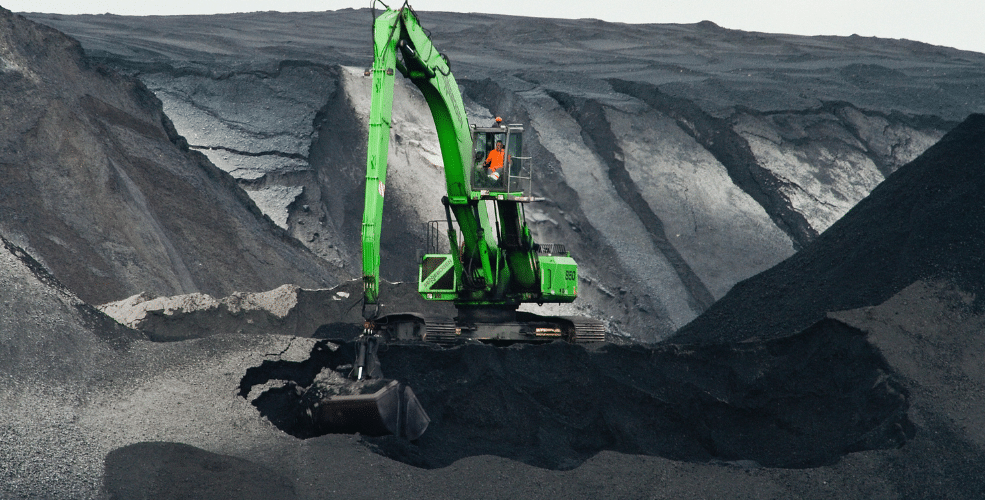7 key factors to evaluate before you buy a mining stock
There are several ways to invest in mining companies. Each method is different, which isn’t necessarily a bad thing—but if you do it wrong, it certainly can be.
This is why before you invest in this field and build your portfolio, it is important to get yourself familiar with popular mining stock picks first.
The commodities of the global mining industry have been doing well despite its notable decrease since 2010. In 2020, the revenue of the top 40 global mining companies amounted to some 656 billion U.S. dollars, which represents the majority of companies in the market.
However, this doesn’t take the risks off the investors’ shoulders. The mining sector has seen a lot of price action over the last year. A stock that was up 60% in a week could be down 20% not even three weeks later.
So what exactly makes mining stocks so volatile? You guessed it – all the negative or positive news floating around.
These companies deal with volatile commodity prices, geopolitics, and other factors that can result in dramatic rises and falls. This article will help ensure that you are making a sound decision by adding more investments to your portfolio.
Know Your Metals
There are different categories of metals and some of the common ones are precious metals, base metals, minerals, and energy materials.
The most frequently used metal are base metals. They are used for large construction projects such as bridges. These construction materials usually refer to concrete, glass, and other building products like graphite, marble, and others.
These are in high demand as they pose significant importance in the global economy.
Precious metals are used for adornments, such as gold and silver jewelry. They are always one of the main choices of investors as they hold a great promise when it comes to economic uncertainty.
The energy materials category includes uranium and thorium ores used for nuclear power generation, as well as fossil fuels like coal and petroleum whose main use is for energy production. They are some of the metals that generate one of the highest incomes if you invest wisely.
Many minerals also have a wide range of uses. While some are sold as ingredients for vitamins that we commonly buy in the market, they are also used in our daily lives. They can be found in school, in our house, and even in the agricultural industry.
By choosing the right company that mines the right trending metals in the market other than gold, you will be able to reap more benefits in the future.
Key Metrics
Given the vast number of mining companies and the unique nature of mining itself, it is not surprising that there is no single definition for what makes a world-class mining company.
Different analysts will use different metrics in their definition of a top tier mining company. The most commonly used metrics are all-in sustaining costs (AISC), cash costs, by-product credits, and ore grades.
All-In Sustaining Cost
The All-In Sustaining Cost or AISC is the total cost of sustaining production as well as capital expenditures. it represents the minimum cost of production after which a company would not be able to sustain its operations.
Mining companies are encouraged by investors and analysts to produce metals at or below the AISC.
By-product Credits
By-product credits are used to offset the cost of primary metals production, particularly copper and zinc when prices are below the cost of production. Copper miners can get credit for their by-products because it usually makes financial sense to produce them even if copper prices are down.
Cash Cost
Cash cost is simply the amount it takes to get one ounce of metal out of the ground. It takes into account direct production costs such as labor, fuel, and materials but also indirect costs such as interest payments on debt or dividends on equity.
Ore Grades
Finally, ore grades are used to measure how rich a deposit is in comparison to what needs to be mined for it to be considered commercially viable.
Economic Factors
When investing in mining stocks, it's important to consider economic factors that can influence the strength of the market. Mining companies rely heavily on the demand for their products.
If there is a decline in demand, the resulting price drop can have a significant impact on that company's bottom line. One of the major headwinds that most companies are facing is the declining use of coal in different industries. This is because most people are leaning on using cleaner, more natural, and renewable gases which is an effort to fight climate change.
Due to the decline in demand, some mining companies that deal with coal reserves are now selling off their assets. However, there are also some tailwinds that you should consider for your next investments.
The world is experiencing rapid growth in renewable energy generation through sources such as wind, solar and hydroelectric power. This is why mining companies are using their growing profits to reinvest into renewable energy projects due to the potential to create long-term value for shareholders and customers alike.
These are just some of the things that you need to not. There are still a lot of factors that you should consider researching before you invest in mining stocks.
In conclusion, mining stocks can be a great investment if you get properly informed and do your research beforehand.
Knowing how to screen potential companies and what to look out for in their future trends is vital, but the most important thing a new investor needs to know is why they invested in a specific company to begin with.
After that, everything else flows more naturally. We hope that this guide has helped you get familiar with your mining stock picks.



